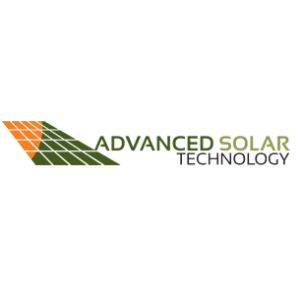Where Are Solar Panels Used in Australia? Advanced SolarPosted by Adavnced Solar Technology on December 19th, 2022  Where are solar panels used in Australia, the most popular ones are PERC technology. 90% of all solar panels are made using this type of technology. It is also worth noting that power companies will sometimes take a small surcharge if you export the energy produced by your panels to the grid. But the real success story has been the distributed solar system that has been developed in Australia. PERC technology is used in 90% of solar panelsPERC technology is a relatively new solar cell technology with many core benefits. These include higher efficiency, lower costs, and the ability to save installers time by incorporating a standardized design. PERC panels are manufactured using modified silicon cells. These cells are modified to have a reflective layer on the back. This layer helps to prevent longer wavelengths from becoming heat. These layers also help to reduce recombination at the rear contact, which is a major source of efficiency losses. Typical industrial PERC cells have a cross-sectional area of between 500 and 600 mm. They are cut from a single piece of silicon. The back surface of the PERC is covered with a reflective layer that is designed to send any unused light back through the junction. Distributed solar has been the real success story in AustraliaAustralia has had the distinction of being one of the world's leading adopters of distributed solar and wind power. It's a feat of technology and government policy that has seen the country's rooftop PV capacity surge from a mere 5 gigawatts in 2006 to over ten gigawatts today. The Australian government has been more than willing to help facilitate solar and wind project deployments, including exemptions for land lease payments and import tariffs. The nation has more than 2.4 million installed systems, with more than a quarter of them in the residential sector. The Australian Energy Council (AEC) recently released the Q1 2020 report on solar in Australia, which included a number of high profile projects. The largest, and arguably the most important, is the solar-plus-storage initiative. This combination of renewable technologies is touted to mitigate the risk of overgeneration. Power companies will hit you with a small surcharge if you export solar energyThe Australian Energy Market Commission (AEMC) has been looking at the best way to boost the take-up of solar energy in Australia. The AEMC has released a draft deliberation on solar power. The draft decision reflects an ongoing consultation process as the rule moves to a final rule. The AEMC is also considering changing the rules around the national electricity grid. The commission has suggested that the best way to encourage more people to use solar power is through incentives. The AEMC has proposed a number of new incentives, including the ability for networks to offer paid export plans. It's also proposed to allow networks to charge customers for using the main power grid. The AEMC has also introduced a 'two-way' pricing system, which allows network companies to set their own prices. These could include negative prices at peak times. These fees would pay customers for the excess solar power they send back to the grid during those busy times. Cost of solar panels in PerthThe price of solar panels in Perth Australia has dropped considerably in recent years. The federal government offers a large rebate to all Australians, which reduces the cost of buying a system. In addition, the cost of a small-scale technology certificate is redeemable for a solar system, meaning that you can offset some of your power bill. The federal government provides a rebate of 30% of the total cost of a solar system. If you are thinking of buying a solar system, this should be a primary consideration. The amount of money you save depends on the size of your solar panel, your power consumption and the location you live. If you have a larger system, you may be able to eliminate your electricity bills altogether. Community pledges to meet aggressive clean energy targetsLos Angeles, California, joins a list of cities and states pledging to meet aggressive clean energy targets. Its Department of Water and Power (DWP) has launched a twoyear equity strategy process, while the Los Angeles City Council passed an LA100 plan last month that would replace natural gas electricity generation with renewables. The goal of the LA100 is to provide 100 percent clean energy to the city by 2035. It includes electrifying transportation and buildings, as well as improving energy efficiency. The plan will also improve transmission infrastructure. The City of Los Angeles will continue to lead the nation in the transition to renewable energy. The Mayor unveiled an updated "Sustainable City pLAn" on Monday. The city's aggressive goals include using more renewable resources, including solar and wind. The plan calls for improving the solar technology Australia energy efficiency of buildings, electrifying transportation, and investing in battery storage. Like it? Share it!More by this author |


